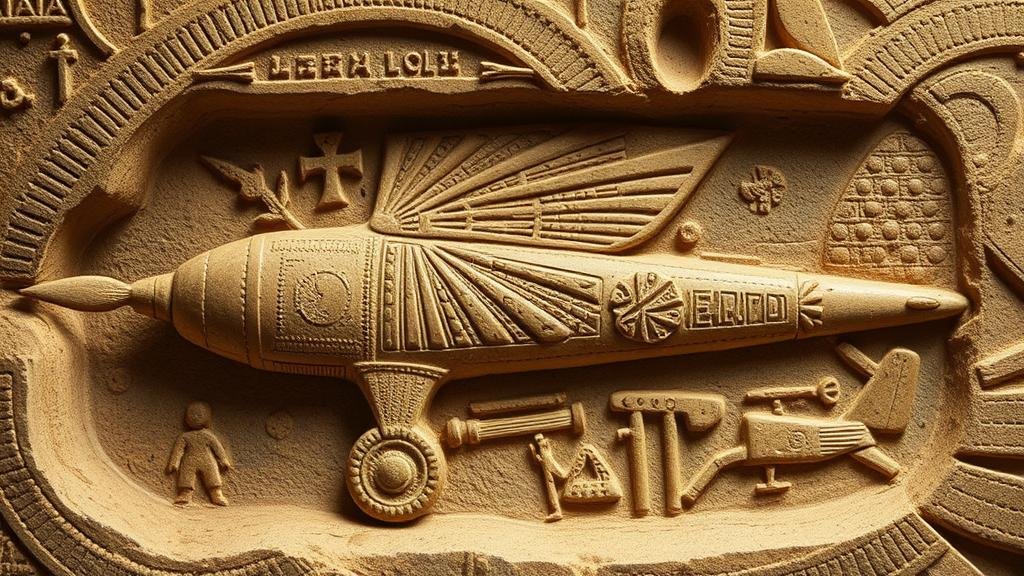Searching for signs of ancient aviation in carvings and artifacts.
Searching for Signs of Ancient Aviation in Carvings and Artifacts
The fascination with ancient aviation has captured the imagination of researchers, enthusiasts, and the curious alike. Through the study of carvings and artifacts, evidence suggesting that ancient civilizations might have engaged with principles of flight becomes a thrilling possibility. As we comb through the relics of the past, it is essential to understand the context, methods, and implications of what these signs reveal about human ingenuity and the quest for flight.
The Pioneers of Ancient Aviation Theories
The concept of ancient aviation finds its roots in various cultures, predominantly those with advanced engineering and architectural feats. Notable scholars and theorists, such as Erich von Däniken, have popularized the notion that ancient civilizations might have observed or even replicated flight centuries before the Wright brothers. These theories often highlight peculiar artifacts and inscriptions that resemble modern flying devices.
Key Artifacts Pointing to Ancient Aviation
Several ancient artifacts around the world have become focal points in the search for signs of early aviation. While skeptics urge caution against over-interpretation, the evidence is thought-provoking.
- Indias Vimanas: Ancient texts like the Mahabharata and Ramayana describe flying machines called vimanas. These texts, dating back to around 400 BCE, feature detailed accounts of aerial warfare using advanced flying vehicles.
- The Nazca Lines: Located in the Nazca Desert of Peru, these enormous geoglyphs, created around 500 BCE, can only be fully appreciated from the air. Some theories suggest they served as landing strips or markers for ancient aviators.
- Etruscan Tomb Paintings: Dating from 700 to 100 BCE, some Etruscan tombs feature murals depicting what appear to be aircraft. The most famous example shows a figure resembling a pilot, surrounded by what some argue may be stylized representations of flying machines.
Analyzing Carvings and Their Implications
The analysis of ancient carvings provides insights into the mentality of societies regarding flight. Many carvings demonstrate an interest in the natural world, possibly indicating that ancient people observed birds and other flying creatures, inspiring designs as they evolved. For example, the ancient Greeks and Romans often illustrated mythological characters like Icarus, who flew too close to the sun, reflecting a deep-seated fascination with aerial movement.
Scientific Interpretations and Skepticism
While many artifacts point to an inclination toward flight, scientific scrutiny is vital. Experts argue that the depictions may not necessarily indicate that ancient people constructed flying devices. Instead, they could symbolize spiritual beliefs or fantastical ideas. For example, Richard Whittle, an aviation historian, points out that interpretations of the Nazca Lines as landing strips lack substantial archaeological evidence to support human flight capabilities in that era.
Modern Applications of Ancient Knowledge
The exploration of ancient aviation concepts may not only offer historical insights but could also inspire modern technological advancements. Concepts found in ancient literature and artifacts sometimes align with aerodynamics principles still in use today. For example, the study of bird flight has led to the development of biomimicry in aviation design, enhancing efficiency and functionality in modern aircraft.
Conclusion: Revisiting the Possibilities
The search for signs of ancient aviation in carvings and artifacts remains a vibrant field of study, inviting both academic inquiry and public interest. While definitive proof may remain elusive, the ongoing investigation into these relics illustrates humanitys enduring fascination with flight. By considering the context of historical discoveries and remaining open to diverse interpretations, we can appreciate the significance of these ancient narratives.
Actionable takeaway: As you explore your interest in ancient aviation, consider visiting archaeological sites or museums that house these artifacts. Engage with experts, read scholarly articles, and participate in discussions that deepen your understanding of the complexities surrounding this captivating intersection of history and technology.



